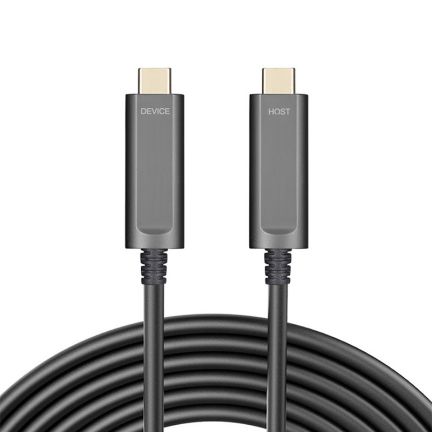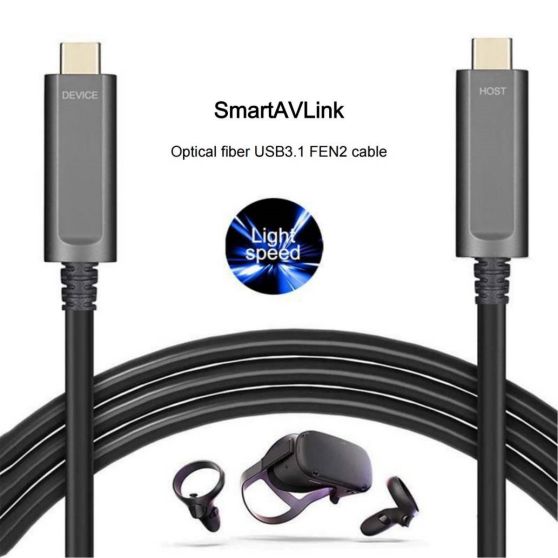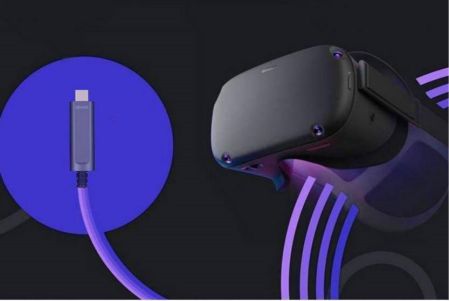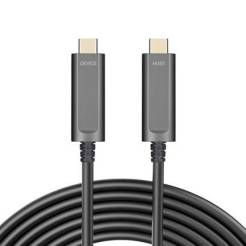A few days ago, SmartAVLink, a solution provider focusing on the R&D and transformation of high-end audio-visual technology solutions, officially released a new optical fiber USB C VR data cable in Shenzhen – optical fiber USB3.1 Gen2 Type C cable. This line is another masterpiece based on the previous in-depth research and development of optical fiber USB3.0/3.1 series products. It is developed and customized according to the current VR mainstream equipment standards, and is widely compatible with VR hosts equipped with USB TYPEC interfaces, such as Meta Quest/PRO/PICO/ VIVE. In addition, SmartAVLink has made a major technical upgrade to this optical fiber USB3.1 Gen2 Type C cable, far exceeding the 5Gbps transmission bandwidth of similar optical fiber USB C products, reaching an astonishing 10Gbps ultra-large bandwidth, and supporting 20V-3A PD60W fast charging .

In the past five years, with the industry trend of “light entering copper and retreating” and the unique non-destructive and non-radiation/anti-interference/light, thin and thin characteristics of optical fiber products, optical fiber cable products have been continuously favored by users. Taking the VR streaming data cable as an example, the copper core USB TYPEC streaming data cable can only achieve a limited transmission distance of 5m even with the addition of an amplifier, and due to the limitations of the copper core cable itself, the cable is bulky and bulky, making it difficult for VR players. Very inconvenient to use. The birth of SmartAVLink optical USB TYPEC not only solves the disadvantage of copper cable being bulky and bulky, but also surpasses the transmission limit of copper cable, and can achieve 10Gbps transmission over a distance of 30 meters.

In addition, judging from the recent high-profile announcements of major international and domestic Internet companies to enter the Metaverse, the demand for VR hosts and cables will inevitably rise. For VR players, it is difficult to achieve stable transmission of wireless streaming, and once the environment interferes, the experience will be greatly affected. This is another big plus for fiber-optic VR streaming data cables. It is reported that SmartAVLink’s research and development of VR transmission lines has not stopped, and the research and development of higher-level fiber-optic USB4 cables has been carried out, which may be in order to better cope with the subsequent VR equipment with higher transmission bandwidth requirements. For more information about SmartAVLink Optical USB3.1 TYPEC, please contact info@smartavlink.com .


